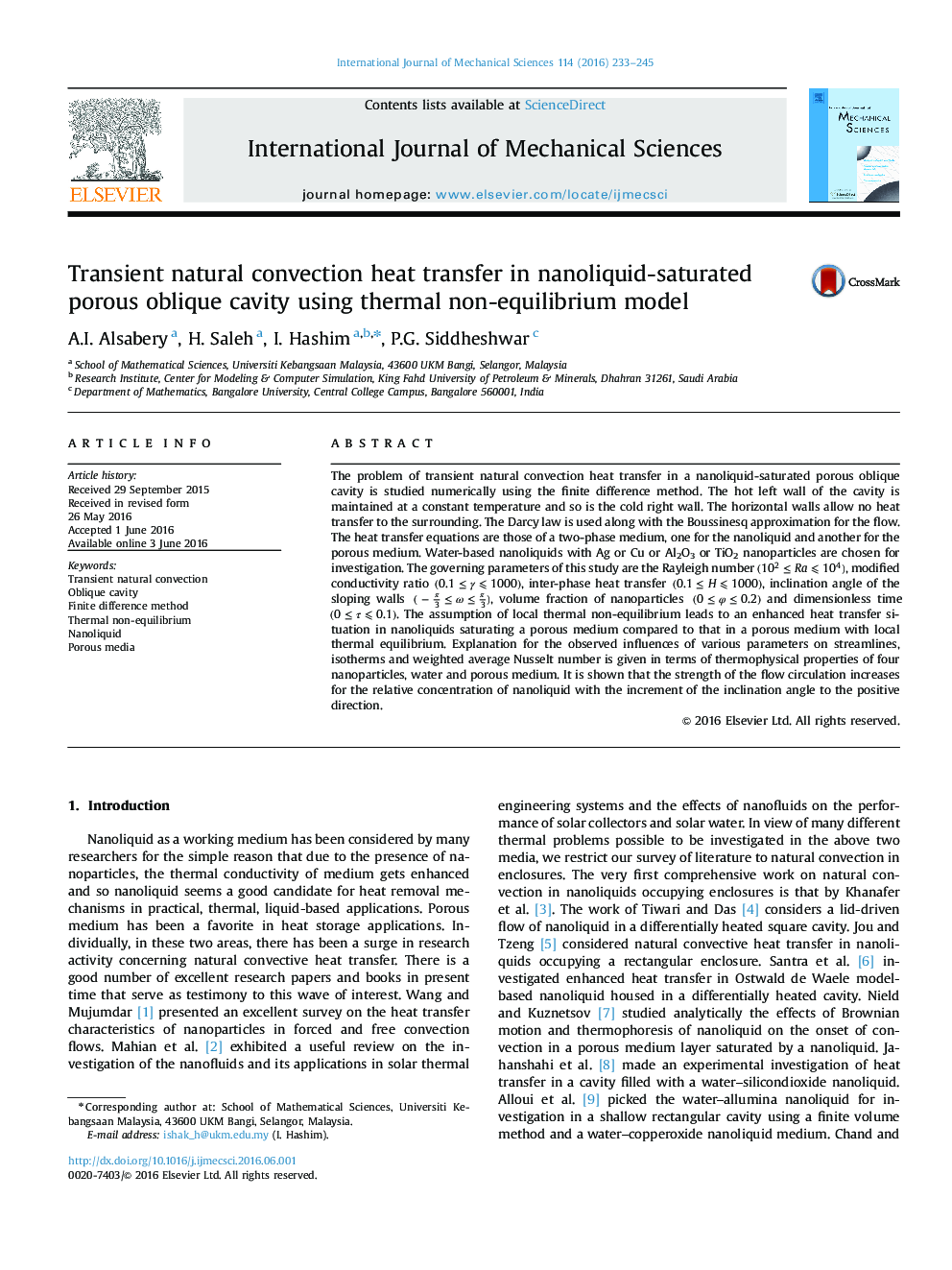| کد مقاله | کد نشریه | سال انتشار | مقاله انگلیسی | نسخه تمام متن |
|---|---|---|---|---|
| 783225 | 1464971 | 2016 | 13 صفحه PDF | دانلود رایگان |
• Finite difference method was applied to solve the governing equations subject to the initial and boundary conditions.
• Actual values of thermophysical quantities concerning four nanoliquids are considered.
• All water-based nanoliquids transport more heat compared to water without nanoparticles.
• The effect of increasing the inclination angle of the sloping walls on the streamlines was studied.
The problem of transient natural convection heat transfer in a nanoliquid-saturated porous oblique cavity is studied numerically using the finite difference method. The hot left wall of the cavity is maintained at a constant temperature and so is the cold right wall. The horizontal walls allow no heat transfer to the surrounding. The Darcy law is used along with the Boussinesq approximation for the flow. The heat transfer equations are those of a two-phase medium, one for the nanoliquid and another for the porous medium. Water-based nanoliquids with Ag or Cu or Al2O3 or TiO2 nanoparticles are chosen for investigation. The governing parameters of this study are the Rayleigh number (102≤Ra⩽104)(102≤Ra⩽104), modified conductivity ratio (0.1≤γ⩽1000)(0.1≤γ⩽1000), inter-phase heat transfer (0.1≤H⩽1000)(0.1≤H⩽1000), inclination angle of the sloping walls (−π3≤ω≤π3), volume fraction of nanoparticles (0≤φ≤0.2)(0≤φ≤0.2) and dimensionless time (0≤τ⩽0.1)(0≤τ⩽0.1). The assumption of local thermal non-equilibrium leads to an enhanced heat transfer situation in nanoliquids saturating a porous medium compared to that in a porous medium with local thermal equilibrium. Explanation for the observed influences of various parameters on streamlines, isotherms and weighted average Nusselt number is given in terms of thermophysical properties of four nanoparticles, water and porous medium. It is shown that the strength of the flow circulation increases for the relative concentration of nanoliquid with the increment of the inclination angle to the positive direction.
Journal: International Journal of Mechanical Sciences - Volume 114, August 2016, Pages 233–245
